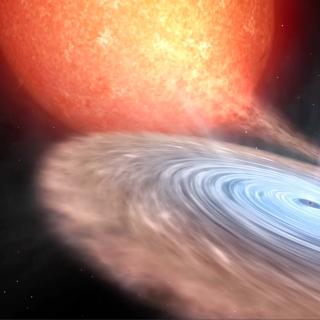Bibcode
Killestein, T. L.; Kelsey, L.; Wickens, E.; Nuttall, L.; Lyman, J.; Krawczyk, C.; Ackley, K.; Dyer, M. J.; Jiménez-Ibarra, F.; Ulaczyk, K.; O'Neill, D.; Kumar, A.; Steeghs, D.; Galloway, D. K.; Dhillon, V. S.; O'Brien, P.; Ramsay, G.; Noysena, K.; Kotak, R.; Breton, R. P.; Pallé, E.; Pollacco, D.; Awiphan, S.; Belkin, S.; Chote, P.; Clark, P.; Coppejans, D.; Duffy, C.; Eyles-Ferris, R.; Godson, B.; Gompertz, B.; Graur, O.; Irawati, P.; Jarvis, D.; Julakanti, Y.; Kennedy, M. R.; Kuncarayakti, H.; Levan, A.; Littlefair, S.; Magee, M.; Mandhai, S.; Mata Sánchez, D.; Mattila, S.; McCormac, J.; Mullaney, J.; Munday, J.; Patel, M.; Pursiainen, M.; Rana, J.; Sawangwit, U.; Stanway, E.; Starling, R.; Warwick, B.; Wiersema, K.
Referencia bibliográfica
Monthly Notices of the Royal Astronomical Society
Fecha de publicación:
9
2024
Número de citas
0
Número de citas referidas
0
Descripción
Time-domain astrophysics continues to grow rapidly, with the inception of new surveys drastically increasing data volumes. Democratized, distributed approaches to training sets for machine learning classifiers are crucial to make the most of this torrent of discovery - with citizen science approaches proving effective at meeting these requirements. In this paper, we describe the creation of and the initial results from the Kilonova Seekers citizen science project, built to find transient phenomena from the GOTO telescopes in near real-time. Kilonova Seekers launched in 2023 July and received over 600 000 classifications from approximately 2000 volunteers over the course of the LIGO-Virgo-KAGRA O4a observing run. During this time, the project has yielded 20 discoveries, generated a 'gold-standard' training set of 17 682 detections for augmenting deep-learned classifiers, and measured the performance and biases of Zooniverse volunteers on real-bogus classification. This project will continue throughout the lifetime of GOTO, pushing candidates at ever-greater cadence, and directly facilitate the next-generation classification algorithms currently in development.
Proyectos relacionados

Exoplanetas y Astrobiología
La búsqueda de vida en el Universo se ha visto impulsada por los recientes descubrimientos de planetas alrededor de otras estrellas (los llamados exoplanetas), convirtiéndose en uno de los campos más activos dentro de la Astrofísica moderna. En los últimos años los descubrimientos cada vez más numerosos de nuevos exoplanetas y los últimos avances
Enric
Pallé Bago

Agujeros negros, estrellas de neutrones, enanas blancas y su entorno local
Los agujeros negros y estrellas de neutrones en binarias de rayos-X son laboratorios únicos para explorar la física de estos objetos compactos. No solo permiten confirmar la existencia de agujeros negros de origen estelar a través de mediciones dinámicas de sus masas, sino que también permiten investigar el comportamiento de la materia y la
Montserrat
Armas Padilla